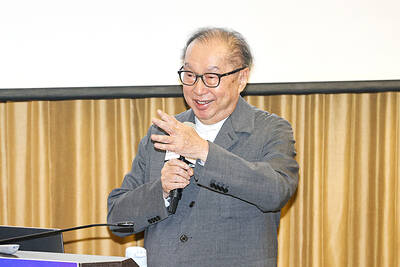Times are good for oak tree growers in France.
Exports of oak logs have soared and so have prices, largely because of demand from China. Beijing last year banned commercial timber harvests and Chinese millennials have developed a taste for high-quality wooden floors and furniture from Europe.
However, boom for France’s exporters could mean bust for some of the country’s 550 sawmills.
French oak producers have traditionally sold oak logs to the mills, which then cut them into lumber for making products ranging from floors and furniture to coffins and wine barrels.
However, now private forest owners have started selling logs directly to Chinese buyers, because they are ready to pay higher prices and do the processing themselves.
This has left many French sawmills short of wood to process and struggling to fulfill orders.
“The problem is that oak has never been as expensive in France and we, the processors, have never had as little of it,” Margaritelli Fontaines head David Chavot said at the sawmill in eastern France.
Sawmills with big stocks of oak are safe for now, but will face problems buying new stock, because they cannot afford the higher prices, National Forest Association head Nicolas Douzain-Didier said.
Smaller ones will lose customers and shed jobs, he said.
“The most fragile will go under, one after another,” Douzain-Didier said.
About 26,000 jobs are directly linked to the oak industry in France, the world’s third-largest producer. By late March, about 80 percent of French sawmills had 30 percent less stock than they needed to fulfill orders.
Any job losses would be politically awkward for French President Emmanuel Macron, who has made reducing unemployment a priority. The sawmill producers have appealed to him for help, but a crisis meeting organized by French Minister of Agriculture Stephane Travert with producers and sawmill bosses in March failed to secure a compromise.
France has tried to regulate the industry by imposing an “EU label” on logs coming from public forests, meaning they must be processed in the EU.
However, French sawmills have said there are ways to bypass the EU label system and want a similar label applied to privately owned forests, which account for nearly 80 percent of wooded areas in France.
For oak growers, who usually cut trees when they are between 100 and 150 years old, the price increase is a welcome rebound after a sharp fall in the late 2000s caused by low demand.
“They [the sawmills] need to live, but so do we,” said Antoine d’Amecourt, who led the private forest owners at the March meeting with Travert.
“Owners prefer the wood to be processed in France, but they need to regenerate forests for the next generations,” he said, explaining it made little difference where the oak is processed.
China is the world’s largest timber importer and its needs are growing, Chinese officials have said.
To meet the booming demand, Chinese manufacturers have had to buy oak abroad since commercial timber harvests were banned to protect natural forests after decades of overcutting.
In Foshan, a furniture trading hub in China’s Guangdong Province, traders have said demand is propped up by young and affluent people who like European interior design.
Almost 90 percent of solid composite wooden floors in China are now made of oak, a sharp rise from the early 2000s, Chinese floor-maker Fudeli Flooring (富得利地板) said.
“At least 70 percent of our customers buying French oak floors are millennials born in the ’80s and ’90s,” Fudeli local dealer Chen Deyi said.
At the Louvre, a vast and lavish furniture exhibition center in Foshan, customers can find luxury brands such as Versace and Bentley Home. For many, prices are not the biggest concern.
“I don’t have a particular budget in mind, but I feel prices are okay here,” said newlywed Liu Zhipeng, who works for an insurance company.
Hoping to cash in on the high demand, Hong Kong-based Four Seasons Furniture (四季家具) has launched a French oak furniture collection. A small side table made of French white oak costs 3,680 yuan (US$573).
“We just recently started promoting French oak furniture inside China. It used to be more export-focused, as appreciation for this type of wood was not as robust,” Louvre sales manager Candy Zhu said.
French oak log exports to China rose 35 percent in the year to January and now account for 70 percent of all French oak log exports, association data showed.
This makes France the second-largest supplier of oak logs to China, ahead of Russia and behind the US.

BYPASSING CHINA TARIFFS: In the first five months of this year, Foxconn sent US$4.4bn of iPhones to the US from India, compared with US$3.7bn in the whole of last year Nearly all the iPhones exported by Foxconn Technology Group (富士康科技集團) from India went to the US between March and last month, customs data showed, far above last year’s average of 50 percent and a clear sign of Apple Inc’s efforts to bypass high US tariffs imposed on China. The numbers, being reported by Reuters for the first time, show that Apple has realigned its India exports to almost exclusively serve the US market, when previously the devices were more widely distributed to nations including the Netherlands and the Czech Republic. During March to last month, Foxconn, known as Hon Hai Precision Industry

Taiwan Semiconductor Manufacturing Co (TSMC, 台積電) and the University of Tokyo (UTokyo) yesterday announced the launch of the TSMC-UTokyo Lab to promote advanced semiconductor research, education and talent development. The lab is TSMC’s first laboratory collaboration with a university outside Taiwan, the company said in a statement. The lab would leverage “the extensive knowledge, experience, and creativity” of both institutions, the company said. It is located in the Asano Section of UTokyo’s Hongo, Tokyo, campus and would be managed by UTokyo faculty, guided by directors from UTokyo and TSMC, the company said. TSMC began working with UTokyo in 2019, resulting in 21 research projects,

Ashton Hall’s morning routine involves dunking his head in iced Saratoga Spring Water. For the company that sells the bottled water — Hall’s brand of choice for drinking, brushing his teeth and submerging himself — that is fantastic news. “We’re so thankful to this incredible fitness influencer called Ashton Hall,” Saratoga owner Primo Brands Corp’s CEO Robbert Rietbroek said on an earnings call after Hall’s morning routine video went viral. “He really helped put our brand on the map.” Primo Brands, which was not affiliated with Hall when he made his video, is among the increasing number of companies benefiting from influencer

Quanta Computer Inc (廣達) chairman Barry Lam (林百里) yesterday expressed a downbeat view about the prospects of humanoid robots, given high manufacturing costs and a lack of target customers. Despite rising demand and high expectations for humanoid robots, high research-and-development costs and uncertain profitability remain major concerns, Lam told reporters following the company’s annual shareholders’ meeting in Taoyuan. “Since it seems a bit unworthy to use such high-cost robots to do household chores, I believe robots designed for specific purposes would be more valuable and present a better business opportunity,” Lam said Instead of investing in humanoid robots, Quanta has opted to invest